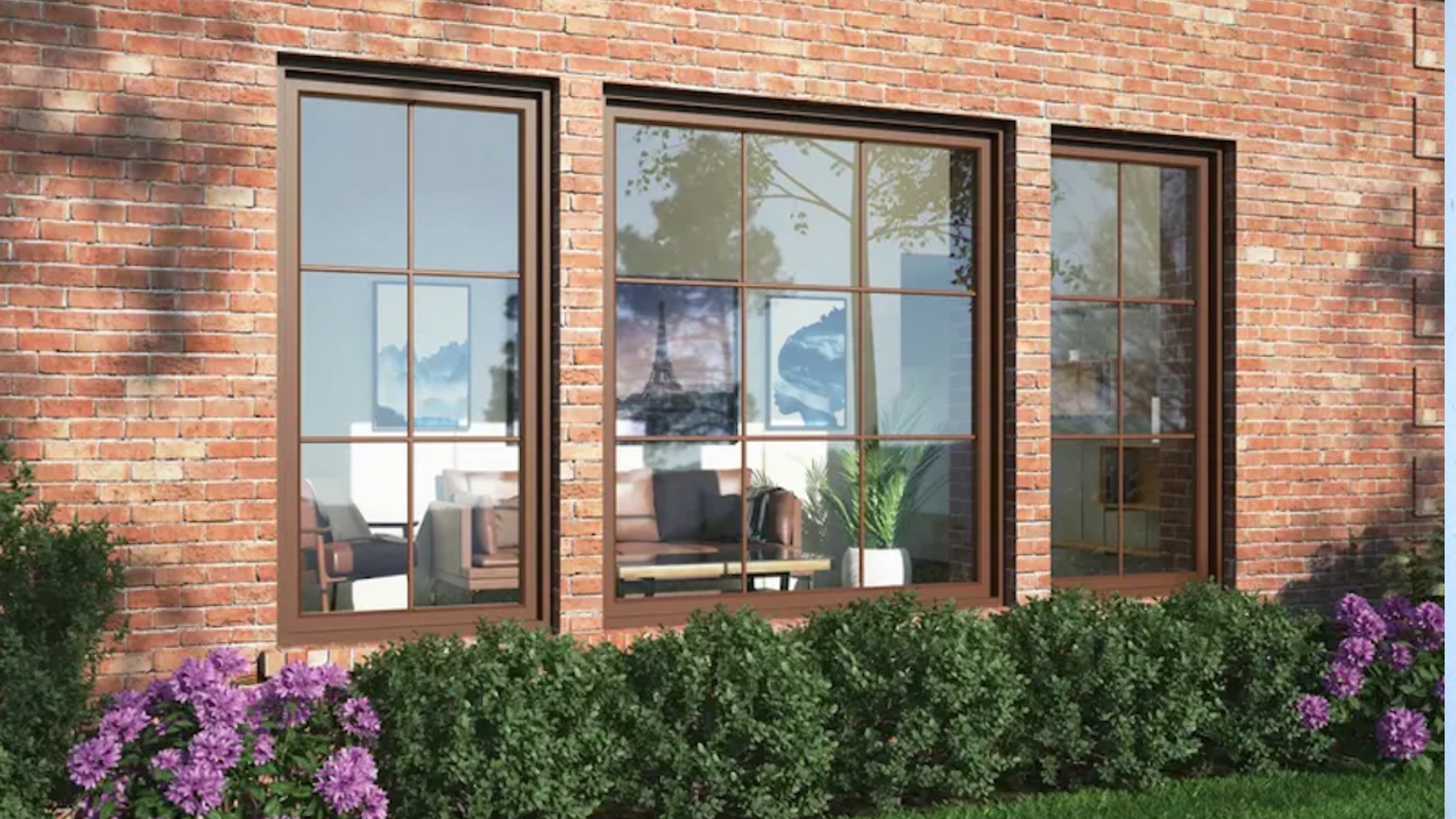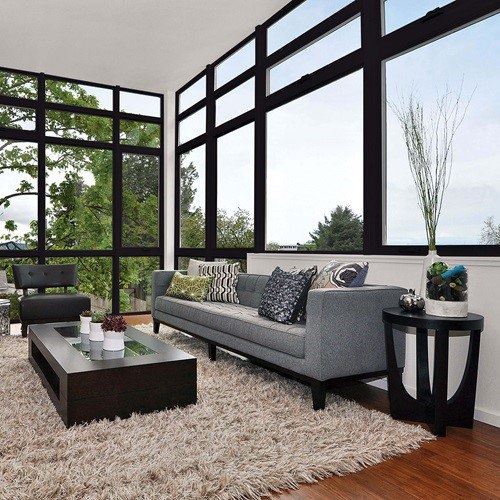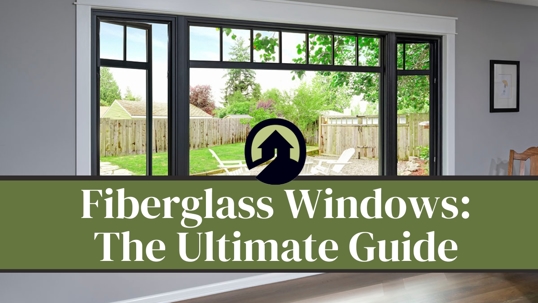Replacing windows in Texas isn’t just about getting a clearer view. It’s about surviving the triple-digit heat, humidity, and hail without your frames waving the white flag.
That’s why fiberglass has become one of the most talked-about window materials in home improvement. But is it really worth the investment? Or is it just the “premium” option salespeople push?
Let’s break down what fiberglass windows really are, how they perform in San Antonio’s climate, and who they’re best suited for so you can decide confidently if they’re the right fit for your home.
What Is a Fiberglass Window, Anyway?

Fiberglass windows are built like a hybrid between glass and resin. Thousands of tiny glass fibers are pulled through a special polymer, creating a material that’s part steel beam, part sports car bumper.
The result? A frame that’s:
- Incredibly strong and dimensionally stable
- Resistant to warping, swelling, or cracking
- Almost immune to rot, rust, and decay
Think of it as reinforced plastic with the backbone of glass. It’s why fiberglass is often called the “set it and forget it” option for long-term homeowners.
Why Fiberglass Windows Are Practically Made for Texas
Let’s talk about the elephant in the room or rather, the sun in the sky.
Texas heat doesn’t just test your patience; it tests your building materials.
Here’s why fiberglass passes with flying colors:
- Minimal expansion and contraction. Fiberglass expands at almost the same rate as glass, so seals stay tight even during big temperature swings.
- UV and heat resistance. Where vinyl frames can soften or discolor, fiberglass holds its shape and color, even in dark finishes.
- Energy efficiency. Tight seals and insulated frames mean less air leakage and lower energy bills.
In short: while other windows wilt in the Texas sun, fiberglass just flexes and keeps going.

Benefits of Fiberglass Windows
Here’s what homeowners love most once they make the switch:
- Strength: Up to eight times stronger than vinyl, allowing for slimmer frames and more glass.
- Longevity: Expect 30–50 years of service life with minimal upkeep.
- Low Maintenance: No rot, no repainting, no warping, just an occasional clean.
- Design Freedom: Paintable in any color, and even available in realistic wood-like finishes such as Marvin’s EverWood®.
- Energy Efficiency: Excellent insulation and air-tight seals help regulate your home year-round.
It’s the rare case where “tough” and “stylish” coexist at the same time.
What About Cost?
This is where fiberglass earns its “premium” label.
- Average cost: Usually 15–30% higher than high-quality vinyl.
- Return on investment: Long-term, fiberglass often wins because it doesn’t need repainting, repairs, or early replacement.
- Home comfort: Fiberglass windows help reduce drafts, minimize UV infiltration, and maintain steadier indoor temperatures, making your home feel more comfortable year-round.
So, while it’s a bigger upfront investment, it’s one that pays you back slowly over decades.
Maintenance, Warranty, and Longevity
A big reason homeowners choose fiberglass is peace of mind.
- Lifespan: 30–50 years when installed properly.
- Maintenance: Just clean occasionally, no repainting or resealing needed.
- Warranty: Premium lines like Infinity from Marvin offer limited lifetime warranties that actually hold up because the material stays stable.
No warping means no voided warranty.
No maintenance means no headaches.
Fiberglass vs. Other Window Materials
| Feature | Fiberglass | Vinyl | Wood | Aluminum |
|---|---|---|---|---|
| Strength / Rigidity | Excellent | Moderate | Good | Fair |
| Thermal Expansion | Very Low | High | Medium | High |
| Maintenance | Minimal (no rot or repainting) | Low | High (regular upkeep) | Low |
| Expected Lifespan | 30–50 years | 20–30 years | 15–25 years | 15–20 years |
| Cost Tier* | $$$ | $$ | $$$ | $$ |
| Design / Aesthetics | Thin frames, paintable, wood-look finishes | Color options, thicker frames | Classic, natural look | Slim, modern profiles |
| Best For | Long-term, low-maintenance homeowners | Budget-focused upgrades | Historic or design-driven projects | Builders or modern spec homes |
The Honest Drawbacks
Even the strongest window material has its kryptonite.
- Higher initial cost: You’ll pay more up front than for vinyl.
- Limited availability: Only sold through select dealers and certified installers.
- Heavier material: Because fiberglass is denser than vinyl, some sliding window styles may have limited size options.
- Not necessary for short-term ownership: If you’re moving in 2–3 years, you may not recoup the investment.
At Southwest Exteriors, we believe in calling it like it is because the right window is the one that fits your goals, not ours.
Is Fiberglass Right for You?

You’ll love fiberglass windows if:
- You plan to stay in your home for 10+ years
- You want a high-end look without maintenance
- You live in harsh or fluctuating climates (hello, San Antonio!)
- You value energy efficiency and long-term savings
But you might consider high-performance vinyl instead if:
- You’re on a tighter budget
- You’re remodeling to sell soon
- You want a quick, practical upgrade
Before You Decide: Ask These Questions
- How long do I plan to stay in this home?
- How much maintenance do I want to do?
- Will this window perform well in my climate?
- Is the warranty strong, transferable and installed by a company I trust?
Final Thoughts: Built to Outlast the Texas Sun
Fiberglass isn’t for everyone but for homeowners who value strength, style, and stability, it’s hard to beat.
At Southwest Exteriors, we install Infinity from Marvin windows because they deliver on every promise we just covered. The right product isn’t the one that costs the most, it’s the one that performs the best for you.
If you’re still comparing window materials, check out our Fiberglass vs. Vinyl Windows guide next or schedule a free, no-pressure consultation to see what’s best for your home.


.2508041318431.jpg)